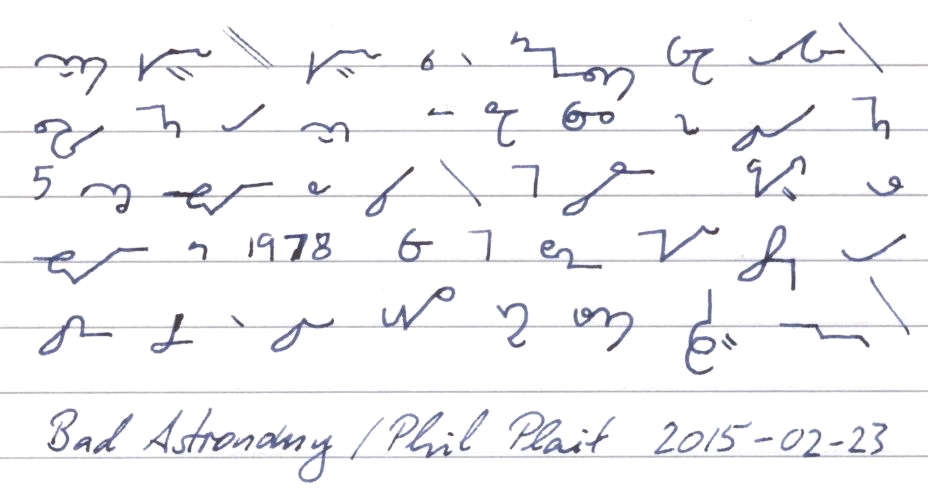Here’s the first paragraph of Phil Plait’s article “Mooning Pluto” on Bad Astronomy in Teeline:

I’m not really happy about how I wrote “Pluto”: Joining upwards L and T is awkward (outline 1, below). I should have writen it disjoined, I think (outline 2). But then, I’m afraid this may indicate some suffix I do not know about yet. The proper way would be to use the normal L, to which T can be easily joined (outline 3). However, this outline would hang very low below the writing line.

I would say 2 is the most preferable of the three – T is always written disjoined after upward L, so 1 is not quite right. 3 is also correct, but is not as compact and may interfere with the line below.
There’s actually a fourth option which you’ll come to later in the book: writing a downward L through the line (or through the previous character) signifies PL with no intervening vowel. So you could write it LTO through the line, which would be read PL-TO 🙂
Thanks for pointing out the problem with version 1. The rule about disjoining T after R and L slipped from my mind. That’s why I didn’t feel happy about how I’ve written it in the text.
The abbreviation for PL sounds interesting. It seems some useful things I don’t know about yet are coming my way. 😉